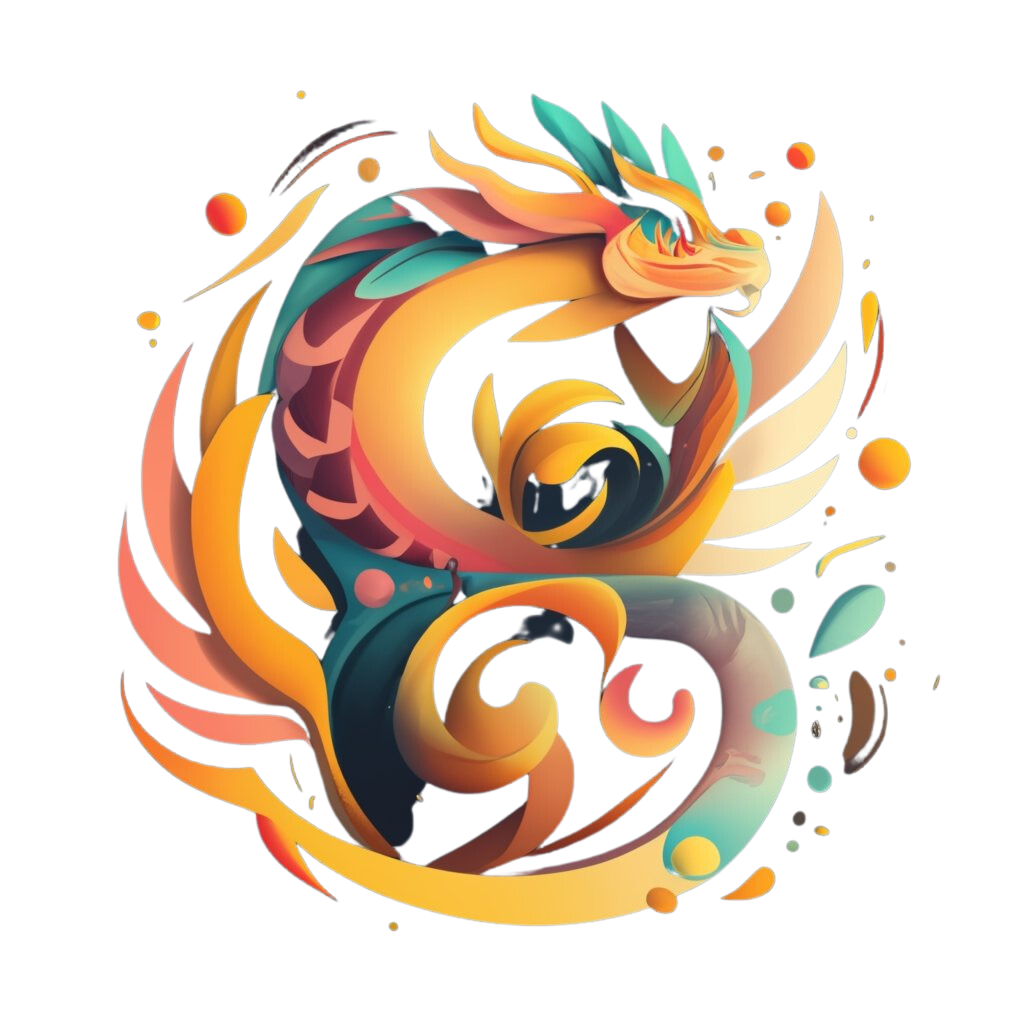Welcome to a captivating journey through the rich world of Filipino mythical creatures and the fascinating folklore that surrounds them. From terrifying ghosts to powerful forest spirits, the Philippines is home to a diverse range of mythical beings that have both frightened and intrigued generations. Join me as we explore the depths of Philippine mythology and uncover the captivating legends that have shaped the country’s cultural fabric.
- Filipino mythology is filled with terrifying and intriguing creatures.
- Some famous mythical creatures include the multo, aswang, and mangkukulam.
- Diwatas and sigbins are powerful forest spirits with their own unique characteristics.
- The bungisngis, amomongo, and manananggal are legendary creatures known for their distinctive features.
- Exploring Filipino mythical creatures offers both chills and excitement.
Unveiling the Multo: Ghostly Spirits Roaming the Philippines
Step into the realm of the supernatural as we explore the chilling tales of the multo, eerie ghostly spirits that linger in haunted sites throughout the Philippines. These otherworldly beings are deeply rooted in Filipino folklore and continue to captivate the imagination of locals and tourists alike.
Known for their translucent figures and haunting presence, multos are believed to be the souls of deceased individuals who have not found eternal rest. They are often associated with places of tragedy, such as old houses, abandoned buildings, and cemeteries, where they are said to wander aimlessly, searching for resolution.
One of the most iconic and popular Filipino folktales is that of the multo. Multo are ghostly spirits that are said to roam the Philippines in search of eternal rest. They are often associated with places of tragedy, such as old houses, abandoned buildings, and cemeteries, where they are said to wander aimlessly, searching for resolution.
There are many different kinds of multo, each with their own unique story. Some are said to be the spirits of those who have died tragically, such as victims of murder or accidents. Others are said to be the spirits of those who have committed suicide or have been cursed. Whatever their story may be, all multo are said to be searching for peace and resolution.
Interestingly, multo are not always seen as being malevolent. In some cases, they are actually seen as helpful spirits that can assist the living. For example, some traditions say that if you treat a multo with respect and offer it food, it will help you find lost objects.
Whether they are seen as being helpful or harmful, multo are an integral part of Filipino folklore and culture. And for those who believe in them, they are very real ghostly spirits that continue to roaming the Philippines in search of eternal rest.
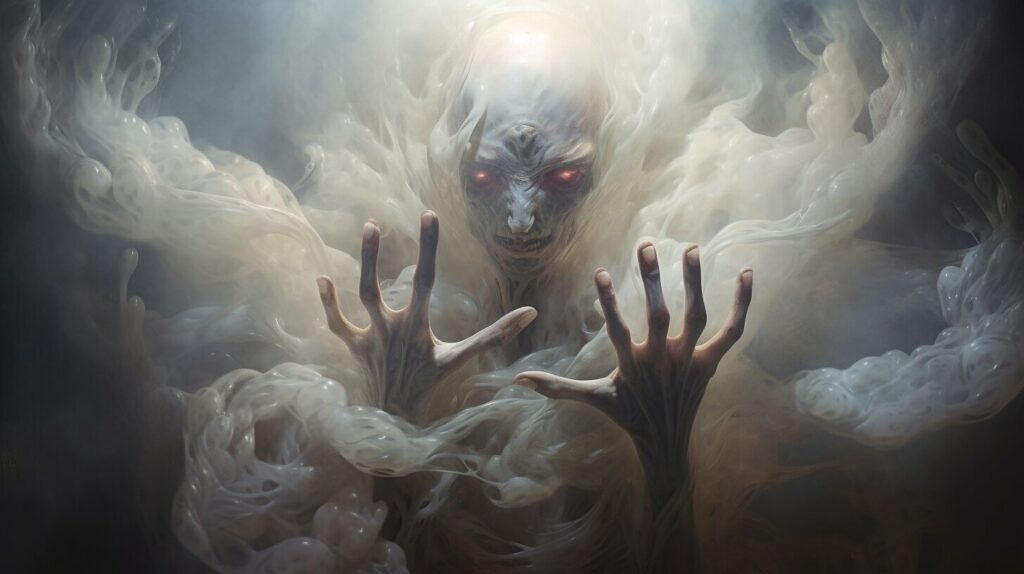
The Philippines boasts a myriad of haunted sites where the presence of multos can be experienced. For thrill-seekers, Baguio, a city in the northern part of the country, offers several renowned locations such as the Diplomat Hotel and Laperal Mansion, known for their paranormal activity. These sites have become popular destinations for ghost-hunting enthusiasts.
Exploring the haunted sites of the Philippines is not for the faint of heart. Each encounter with a multo is sure to send shivers down your spine, reaffirming the rich supernatural folklore that permeates the country. These ghostly spirits remind us that beneath the surface of our everyday lives, there exists a world inhabited by the unknown and the unexplained.
Filipino Mythical Creatures continued:
The Aswang: A Legendary Creature of Capiz
Brace yourself for a spine-tingling encounter with the aswang, a legendary creature that has terrorized the province of Capiz for centuries. This supernatural being, often depicted as a female monster, is known for its insatiable appetite for human innards. Capiz, a province in the Philippines, is the epicenter of aswang sightings and has even dedicated an annual Aswang Festival to celebrate this mythical creature.
Aswang stories have been passed down through generations, captivating the imagination of both locals and visitors alike. This creature is said to possess the ability to transform into various forms, making it difficult to identify. It is believed to prey on pregnant women, children, and individuals with weakened immune systems.
The aswang is deeply rooted in Philippine mythology and continues to be a source of fear and fascination. Its presence in Capiz has become an integral part of the local folklore, shaping the cultural identity of the province. Exploring the legends and tales surrounding the aswang offers a glimpse into the rich and diverse mythology of the Philippines.

| Aswang Characteristics | Aswang Legends |
|---|---|
|
|
Note: The summary has been edited and condensed for clarity and conciseness.
Philippine mythological creatures include some deity. You can explore more Philippine art and Philippine folk literature on my site.
Aswang Sightings
Aswang sightings have been reported throughout the province of Capiz, with numerous eyewitness accounts sharing chilling encounters. These stories have become part of the fabric of Capiz’s cultural heritage, contributing to the province’s reputation as the home of the aswang.
One of the most famous stories is that of the “Tiktik” and “Sitsit” aswang, which are known for their distinct sounds. The “Tiktik” is said to make a “tik-tik” sound, while the “Sitsit” produces a “ssst” sound. Locals believe that when they hear these eerie sounds at night, it is a sign that an aswang is nearby.
While many dismiss these stories as mere folklore, others claim to have seen the aswang firsthand or have had close encounters with this supernatural being. The mystery and intrigue surrounding the aswang continue to captivate the imaginations of those interested in the paranormal.
In conclusion, the aswang remains one of the most iconic and feared creatures in Philippine mythology. Its terrifying reputation in the province of Capiz has cemented its place in local folklore. Whether these sightings are the result of genuine supernatural encounters or simply the product of vivid imaginations, the aswang continues to be a fascinating and enduring part of Filipino culture.
Mangkukulam: Mysterious Practitioners of Dark Arts
Unlock the secrets of the mangkukulam, enigmatic beings who wield powerful dark arts and are said to reside on the mystical island of Siquijor. These practitioners of the occult are believed to possess the ability to cause unexplained ailments and misfortunes through their rituals and the use of personal effects.
Siquijor, known as the “Island of Fire,” holds a long-standing reputation for its association with mysticism and supernatural practices, making it the perfect setting for the mysterious mangkukulam. This idyllic island paradise, with its lush forests and pristine beaches, hides a deeper, darker side that has captivated the imagination of locals and visitors alike.
The mangkukulam are known to perform their rituals in secluded areas of the island, surrounded by the natural beauty of Siquijor. Often utilizing dolls or photographs to represent their targets, they invoke ancient incantations and channel their potent energies through their personal belongings. The effects of their rituals are said to range from unexplained illnesses and physical ailments to financial misfortune and even death.
| Mangkukulam Rituals: | Effects: |
|---|---|
| Creating dolls or using photographs to represent their targets | Unexplained illnesses and physical ailments |
| Invoking ancient incantations and channeling energies | Financial misfortune |
| Death |
The belief in the power of the mangkukulam is deeply rooted in Filipino folklore and continues to intrigue those who dare to explore the mystical island of Siquijor. As you journey through this enchanting realm, prepare to be immersed in a world where reality and myth intertwine.
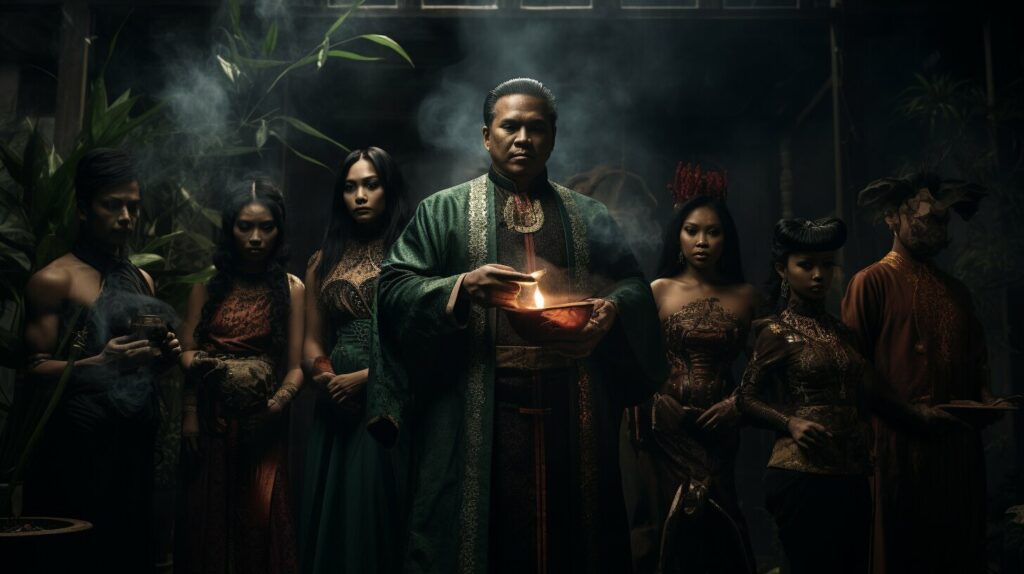
While the tales of the mangkukulam may send shivers down your spine, Siquijor offers much more than just its dark mystique. As you venture into the heart of the island, immerse yourself in its natural wonders and vibrant culture.
- Explore the pristine white sand beaches that line the coast, where crystal-clear waters invite you for a refreshing swim or a leisurely stroll along the shore.
- Discover the enchanting waterfalls hidden within the lush forests, where you can take a dip in the cool, rejuvenating waters.
- Indulge in the delectable local cuisine, savoring the flavors of traditional dishes that are a true reflection of the island’s rich cultural heritage.
“Siquijor is a place of magic and mystery, where the beauty of nature and the allure of the supernatural coexist in perfect harmony.”
As you embark on your journey to uncover the secrets of the mangkukulam, take a moment to embrace the wonder and beauty that surrounds you. Siquijor offers a captivating blend of myth and reality, where every step reveals a new layer of enchantment.
Diwatas: Enigmatic Forest Spirits of the Philippines
Venture into the mystical world of the diwatas, awe-inspiring forest spirits that hold great power, and discover the captivating tale of Mariang Makiling, one of the most renowned diwatas in Filipino folklore.
Diwatas are believed to be enchanting beings who reside in the deep forests of the Philippines. They are known for their beauty, grace, and ability to shape-shift into different forms. These ethereal creatures are deeply connected to nature, possessing the ability to manipulate the elements and protect the forests they call home.
| Diwatas: Enigmatic Forest Spirits of the Philippines |
|---|
Mariang Makiling, often referred to as the “Guardian of Mount Makiling,” is a prominent figure in Filipino folklore. Legends tell of her benevolence and her ability to heal the sick and protect those who respect the mountain’s boundaries. Many people still believe in her existence and pay homage to her through offerings and prayers.
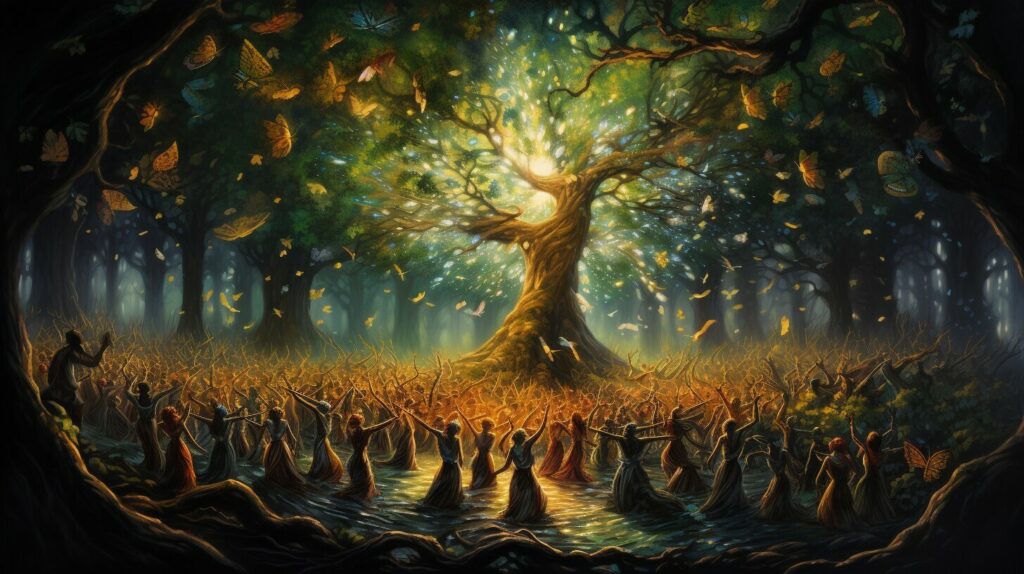
“The diwatas are mysterious and alluring beings, guiding us through the enchanted forests and reminding us of the importance of preserving the natural wonders of the Philippines.” – Maria, avid explorer of Filipino folklore
The Legend of Mariang Makiling
The story of Mariang Makiling revolves around her compassion for humanity and her deep connection to the mountain. According to the legend, she appeared as a beautiful and kind-hearted woman who would often be seen helping those in need.
- Mariang Makiling was known to possess extraordinary healing abilities, using her touch to cure ailments and bring comfort to the sick.
- She would also guide lost travelers, ensuring their safe passage through the treacherous terrains of Mount Makiling.
- Legends speak of her fierce protection of the mountain’s resources, punishing those who harm the land or disrespect its sanctity.
The story of Mariang Makiling serves as a reminder to cherish and respect the natural beauty of the Philippines. Her presence continues to inspire awe and reverence, captivating the hearts and minds of those who hear her tale.
Embark on a journey through the mystical realm of the diwatas and uncover the enchanting world of Mariang Makiling. Let the magic of Filipino folklore weave its spell on you as you delve into the rich tapestry of myths and legends that make up the cultural heritage of the Philippines.
Sigbin: Holy Week Terror in Bohol
Brace yourself for a bone-chilling encounter with the sigbin, a creature of the shadows that haunts the island of Bohol during the solemn Holy Week. This eerie creature, resembling a small kangaroo, has long been a source of fear and fascination for locals and visitors alike.
Legend has it that the sigbin emerges from hiding during Holy Week, prowling the streets and preying on the hearts of unsuspecting children. It is said to possess the power to shape-shift, often appearing as a black dog or a goat, luring its victims with its supernatural allure.
As the sun sets and darkness envelops the island, tales of encounters with the sigbin send shivers down the spines of those who dare to venture out. Locals believe that carrying garlic or holy water can ward off this terrifying creature, while others take extra precautions by staying indoors during the nights of Holy Week.
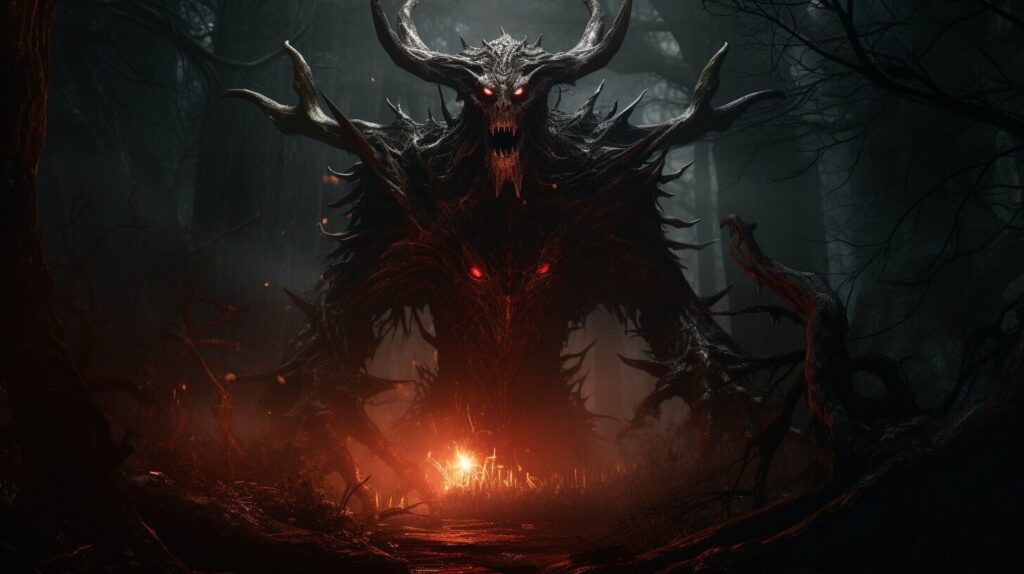
The Haunting Presence of the Sigbin
Boholans have grown up listening to stories of the sigbin, passed down through generations. The creature’s presence during Holy Week has become an integral part of the island’s folklore and traditions.
While the sigbin may invoke fear, it also serves as a reminder of the rich cultural heritage of Bohol. The belief in this mythical creature has shaped the way people celebrate Holy Week, adding an air of mystery and anticipation to the religious observances.
So, if you find yourself on the island of Bohol during Holy Week, be prepared for an encounter with the sigbin. Immerse yourself in the local customs, listen to the stories shared by the locals, and embrace the thrill of this unique and spine-tingling experience.
| Key Points |
|---|
| 1. The sigbin is a creature of Filipino mythology that haunts the island of Bohol during Holy Week. |
| 2. It is said to prey on the hearts of children, appearing as a black dog or a goat. |
| 3. Carrying garlic or holy water is believed to ward off the sigbin’s presence. |
| 4. The legend of the sigbin adds an element of mystery and anticipation to Holy Week celebrations in Bohol. |
Berberoka: The Drowning Menace of Ilocos Norte
Prepare to be captivated by the terrifying legend of the berberoka, a fearsome water creature that lurks in the depths of the lakes in Ilocos Norte, waiting to drag unsuspecting fishermen to their watery demise. This creature is a staple in Philippine folklore, captivating the imaginations of locals and visitors alike. With its powerful grip and ability to manipulate water, the berberoka is a force to be reckoned with.
According to legends, the berberoka disguises itself as a beautiful, enchanting woman to lure fishermen into its trap. Once the unsuspecting victim is close enough, the creature reveals its true form and drags them into the depths of the lake. Its immense strength and speed make escape nearly impossible, leaving fishermen helpless in its clutches.
To protect themselves from the berberoka’s wrath, fishermen in Ilocos Norte have developed various rituals and traditions. They offer prayers and sacrifices to appease the creature, hoping to avoid its deadly grasp. These rituals are passed down from generation to generation, ensuring that the knowledge and respect for the berberoka’s power is never forgotten.
The legend of the berberoka serves as a reminder of the respect and caution that must be exercised when venturing into the waters of Ilocos Norte. The creature’s presence adds an element of mystery and fear to the lakes of the region, making them all the more intriguing to explore.
In conclusion, the berberoka is a haunting figure in Philippine folklore, captivating those who hear of its terrifying exploits. Its ability to manipulate water and its insatiable hunger for unsuspecting fishermen make it a creature to be feared. As you delve into the rich mythology of the Philippines, be sure to immerse yourself in the legend of the berberoka and the captivating tales that surround it.
| Legend | Location | Known Victims |
|---|---|---|
| Berberoka | Ilocos Norte | Unsuspecting Fishermen |
Bungisngis: The Beast of Bataan
Encounter the menacing bungisngis, a formidable beast from the province of Bataan, known for its one-eyed visage and insatiable appetite for livestock. This fearsome creature has long been a part of Filipino mythology, striking fear into the hearts of the local villagers.
The bungisngis is said to inhabit the dense forests and mountains of Bataan, lurking in the shadows, ready to pounce on unsuspecting prey. With its distinctive features, including a grotesque grin revealing its sharp fangs, the bungisngis is a creature that captures the imagination.
Legend has it that the bungisngis emits a deep, booming laugh that echoes through the night, sending shivers down the spines of anyone who hears it. It is said to be particularly drawn to the sound of livestock, which it devours with its powerful jaws and voracious appetite.
Despite its terrifying reputation, the bungisngis has become a fascinating character in Filipino folklore. Its unique appearance and chilling laughter have inspired artists and storytellers throughout the ages. The bungisngis serves as a reminder of the rich mythology that permeates the culture of the Philippines.
| Bungisngis Traits | Description |
|---|---|
| Appearance | One-eyed visage, large lips, and teeth |
| Behavior | Feeds on livestock with insatiable appetite |
| Sound | Emits a deep, booming laugh |
| Location | Found in the forests and mountains of Bataan |
“The bungisngis is an iconic creature in Filipino mythology, captivating both locals and foreigners alike. Its intimidating features and eerie laughter have become a part of our cultural fabric.” – Dr. Maria Santos, Folklore Expert
Whether the bungisngis is merely a product of the human imagination or a creature that truly roams the forests of Bataan, it remains an integral part of Filipino mythology. Its presence serves as a reminder that even in the modern age, ancient legends continue to captivate and inspire.
Discover the Bungisngis Through Folklore and Legends
Exploring the mythical world of the bungisngis allows us to delve deeper into the rich tapestry of Filipino folklore. Through stories and legends, we can unlock the secrets of this fearsome creature and gain a better understanding of the cultural heritage it represents.
The tales of encounters with the bungisngis, passed down through generations, keep the spirit of this mythical beast alive. These stories serve as a connection to our past and a reminder of the power of storytelling in preserving our cultural traditions.
So, venture into the province of Bataan and immerse yourself in the captivating world of the bungisngis. Listen closely for its haunting laughter and let your imagination roam free as you explore the enchanting realm of Filipino mythology.
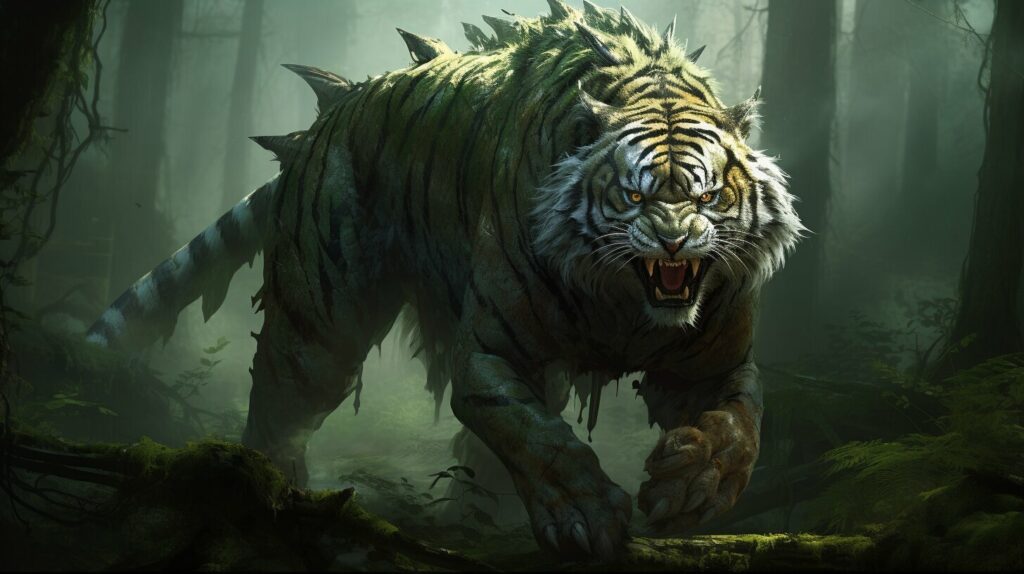
Amomongo: The Hairy White Ape of Mt. Kanlaon
Prepare to enter the domain of the amomongo, a mysterious hairy white ape that lurks in the shadows of Mt. Kanlaon, captivating those who dare to venture into its territory. According to Filipino folklore, the amomongo is said to reside at the base of this legendary mountain in Negros Occidental, a province known for its rich cultural heritage.
This enigmatic creature is believed to possess immense strength and agility, making it elusive and difficult to capture. Witnesses claim that the amomongo stands at an impressive height of up to seven feet, with long, shaggy white fur covering its muscular body. Its piercing red eyes are said to glow in the dark, adding to its eerie presence.
The amomongo has become a subject of fascination among locals and tourists alike, with numerous sightings and stories passed down through generations. Some believe that encountering the amomongo can bring good luck, while others view it as a creature to be feared and respected.

This captivating legend has even inspired artists and writers, who have brought the amomongo to life in various forms of media. The allure of uncovering the truth behind this mythical creature continues to attract adventurers and researchers to Mt. Kanlaon, where they hope to catch a glimpse of the elusive amomongo.
As you embark on your journey through the realm of Filipino mythical creatures, the amomongo beckons you to delve deeper into its mysterious existence. Explore the beauty of Mt. Kanlaon and the legends that surround it, and who knows, you might just uncover the truth behind the hairy white ape that has captivated the imaginations of many.
| Folklore Creature | Location | Key Characteristics |
|---|---|---|
| Amomongo | Mt. Kanlaon, Negros Occidental | Hairy white ape with piercing red eyes |
Manananggal: The Legendary Vampiric Creature
Be drawn into the chilling legend of the manananggal, a fearsome vampiric creature that haunts the night skies of Iloilo, Capiz, and Antique. This monstrous entity, with its grotesque appearance and horrifying abilities, has long captivated imaginations and sent shivers down the spines of those who dare to believe in its existence.
According to Filipino mythology, the manananggal is a female creature that partially detaches its upper body from its lower half, sprouting bat-like wings that allow it to take flight. Under the cover of darkness, it searches for prey, often targeting pregnant women and their unborn children. With its long, sharp tongue, the manananggal pierces the bellies of its victims, feasting on the blood and internal organs.
Legends and folklore tell of the creature’s vulnerability to sunlight and salt. As dawn approaches, the manananggal must quickly rejoin its severed lower half, for if any sunlight touches its exposed viscera, it will perish. Likewise, a trail of salt spread around its lower body can prevent the creature from reuniting and render it powerless.
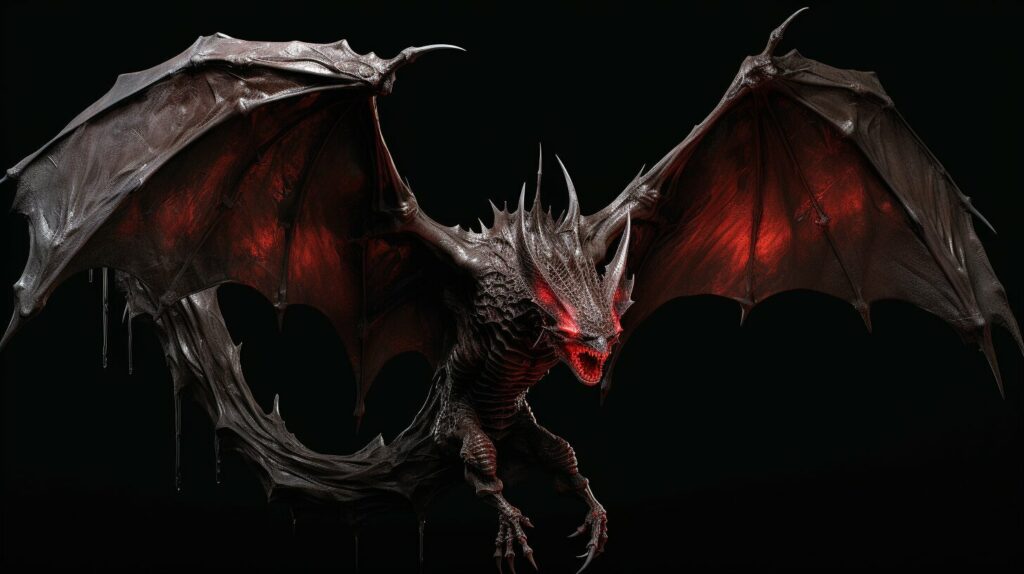
The manananggal’s terrifying presence in the provinces of Iloilo, Capiz, and Antique has left a lasting impression on the communities that have grown up with these stories. Today, the legend lives on through various forms of media, including movies and literature, further fueling the fascination with this nightmarish creature.
Manananggal: A Legendary Horror
| Appearance | Abilities | Vulnerabilities |
|---|---|---|
| Upper torso detaches from lower body, sprouts wings | Flight, sharp claws and teeth, long tongue for feeding | Weakness to sunlight and salt |
As you delve deeper into the haunting world of Filipino mythology, the manananggal is sure to leave an indelible mark on your imagination. Its gruesome visage and bloodthirsty nature serve as a haunting reminder of the rich folklore and legends that continue to shape the cultural fabric of the Philippines.
There are numerous mythological creatures in Filipino folklore. Some of the popular ones include:
1. Aswang: A vampire-like creature that can transform into different forms, such as a bat, pig, or black dog. It preys on pregnant women and children, usually sucking the blood or consuming the internal organs.
2. Tikbalang: A humanoid creature with the head and hooves of a horse and the body of a man. It is said to live in the mountains and forests, sometimes playing tricks on travelers or leading them astray.
3. Kapre: A giant tree-dwelling creature with a strong smell of tobacco. It often smokes a cigar and is said to befriend those who offer it tobacco or alcohol, but it can also be mischievous or malevolent toward humans.
4. Manananggal: A mythical creature that appears as a beautiful woman during the day but detaches its upper half at night to become a flying creature with bat-like wings. It seeks out pregnant women to suck their blood.
5. Duwende: A small mischievous creature similar to gnomes or dwarves. They are known to live in trees, houses, or rocky areas. They are often depicted as playful and harmless, but can also be temperamental or vengeful towards those who disrespect them.
6. Nuno sa Punso: A dwarf-like creature that resides in ant hills. They are protective of their homes and can bring bad luck or illness to those who disturb or disrespect them.
These are just a few examples of the many fascinating mythological creatures found in Filipino folklore.
Reflections on a Fascinating Exploration
As our journey through the captivating world of Filipino mythical creatures draws to a close, take a moment to reflect on the awe-inspiring tales and ancient legends that have brought this mythical realm to life. From the ghostly spirits of the multo to the terrifying aswang, each creature has its place in Filipino folklore, weaving a tapestry of mystery and intrigue.
Throughout our exploration, we have ventured into haunted sites like the Diplomat Hotel and Laperal Mansion in Baguio, where the presence of restless spirits lingers. The province of Capiz has shared its terrifying legend of the aswang, a creature known for its insatiable craving for human innards. The annual Aswang Festival celebrates this mythical creature and the rich heritage of Capiz.
We have delved into the mysterious world of the mangkukulam in Siquijor, where practitioners of dark arts are believed to cause unexplained ailments using rituals and personal effects. The enigmatic diwatas, such as Mariang Makiling, have taken us deep into the forested mountains of Laguna, where their power can be both benevolent and vengeful.
From the heartland of Bohol, we have uncovered the haunting legend of the sigbin, a creature that hunts for the hearts of children during Holy Week. The lakes of Ilocos Norte have whispered the chilling existence of the berberoka, a water creature that preys on unsuspecting fishermen. In Bataan, the fearsome bungisngis has sent shivers down our spines with its one-eyed visage and insatiable appetite for livestock.
Lastly, our journey has taken us to the base of Mt. Kanlaon in Negros Occidental, where the amomongo, a hairy white ape, is believed to reside. And in the provinces of Iloilo, Capiz, and Antique, the legend of the manananggal has been deeply rooted in local folklore, captivating the imaginations of many.
This exploration into the world of Filipino mythical creatures has been nothing short of extraordinary. It has allowed us to delve into the rich tapestry of Philippine mythology and folklore, unraveling tales that have been passed down through generations. As we bid farewell to this enchanting journey, may the tales of these mythical creatures continue to inspire wonder and curiosity in all who encounter them.
Interested in buying mythical creature art? Click here to go to my shop.
Questions people also ask:
What are some famous mythical creatures in Filipino folklore?
Some famous mythical creatures in Filipino folklore include the multo, aswang, mangkukulam, diwatas, sigbin, berberoka, bungisngis, amomongo, and manananggal.
Where can I find haunted sites in the Philippines?
Some popular haunted sites in the Philippines include Baguio, known for its haunted locations like the Diplomat Hotel and Laperal Mansion.
What is the Aswang Festival?
The Aswang Festival is an annual celebration held in Capiz, dedicated to the mythical creature known as the aswang.
Where is Siquijor and why is it famous?
Siquijor is an island in the Philippines known as the home of mangkukulams, mysterious practitioners of dark arts who are believed to cause unexplained ailments.
Who is Mariang Makiling?
Mariang Makiling is a well-known diwata, or forest spirit, in Filipino folklore. She is associated with Mount Makiling in Laguna and is believed to possess powers over nature.
What is the legend of the sigbin?
The sigbin is a creature resembling a small kangaroo found in Bohol. According to legend, it hunts for the hearts of children during Holy Week.
What is the berberoka?
The berberoka is a water creature in Ilocos Norte that preys on fishermen by drowning them with the water it sucks from lakes.
What is the bungisngis?
The bungisngis is a one-eyed creature with huge lips and teeth that preys on livestock in Bataan.
Where can I find the amomongo?
The amomongo, a hairy white ape, is believed to be found at the base of Mt. Kanlaon in Negros Occidental.
What are the provinces associated with the manananggal?
The manananggal, a legendary vampiric creature, is deeply rooted in the provinces of Iloilo, Capiz, and Antique.
What can I expect from exploring Filipino mythical creatures?
Exploring Filipino mythical creatures promises both chills and excitement, whether it’s visiting haunted sites, encountering supernatural beings, or delving into ancient legends.
